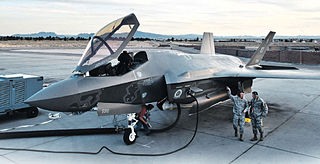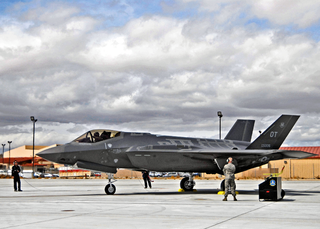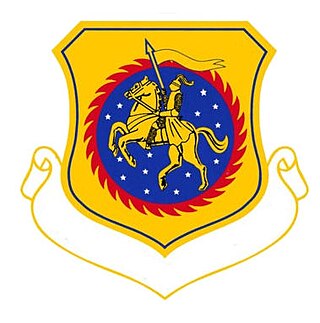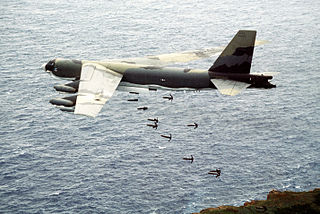
The 39th Air Base Wing is a United States Air Force unit assigned to the Third Air Force. It is stationed at Incirlik Air Base, Turkey. The wing is also the host unit at Incirlik.

The 5th Bomb Wing is a United States Air Force unit assigned to Air Force Global Strike Command's Eighth Air Force. It is stationed at Minot Air Force Base, North Dakota. The wing is also the host unit at Minot. The 5 BW is one of only two active duty Boeing B-52H Stratofortress wings in the United States Air Force, the other being the 2d Bomb Wing at Barksdale Air Force Base, Louisiana. Also, stationed at Barksdale Air Force Base, and operating the B-52H is a third unit, the 307th Bomb Wing, which is part of the Air Force Reserve Command.

The 100th Air Refueling Wing, nicknamed the Bloody Hundredth, is a United States Air Force unit assigned to the Third Air Force, United States Air Forces in Europe – Air Forces Africa. It is stationed at RAF Mildenhall, Suffolk, United Kingdom. It is also the host wing at RAF Mildenhall.

The 23rd Bomb Squadron is a United States Air Force unit, assigned to the 5th Bomb Wing. It is stationed at Minot Air Force Base, North Dakota. The mission of the squadron is to fly the Boeing B-52H Stratofortress strategic bomber. The men and women of the "Bomber Barons" stand ready to project global power on a daily basis in both conventional and nuclear warfare.

The 99th Air Base Wing is a United States Air Force unit assigned to the Air Combat Command (ACC) and its ACC subordinate organization, the United States Air Force Warfare Center. It is based at Nellis Air Force Base, Nevada and also serves as the host wing at Nellis.

The 319th Reconnaissance Wing is a United States Air Force unit assigned to the Air Combat Command. It is stationed at Grand Forks Air Force Base, North Dakota. The wing is the host unit at Grand Forks.

The 31st Test and Evaluation Squadron is a United States Air Force unit, assigned to the 53d Test and Evaluation Group, stationed at Edwards Air Force Base, California as a geographically separated unit of the 53rd Wing. The 31 TES is an Air Combat Command (ACC) tenant unit at Edwards, providing personnel to support combined test and evaluation on Air Force weapons systems.

The 5th Reconnaissance Squadron is part of the 9th Reconnaissance Wing, assigned to Beale Air Force Base, California. It is stationed at Osan Air Base, South Korea as a Geographically Separated Unit (GSU). The squadron is the fifth oldest United States Air Force squadron, its history dating to 5 May 1917 as the World War I 5th Aero Squadron.

The 9th Operations Group is the operational flying component of the 9th Reconnaissance Wing, stationed at Beale Air Force Base, California.

The 72d Test and Evaluation Squadron is part of the 53d Wing at Eglin Air Force Base, Florida. The squadron is geographically separated but is operated from Whiteman Air Force Base, Missouri. It conducts testing and evaluation of the B-2 Spirit aircraft.

The 436th Training Squadron is a non-flying training squadron of the United States Air Force. The 436th Training Squadron, located at Dyess Air Force Base, Texas, is a geographically separated unit (GSU) within Air Combat Command’s 552nd Air Control Wing, Tinker AFB, Oklahoma.

The 73d Bombardment Squadron is an inactive United States Air Force unit. It was last assigned to the 4241st Strategic Wing, based at Seymour Johnson Air Force Base, North Carolina. It was inactivated on 15 April 1963.

The 307th Operations Group is an Air Reserve Component of the United States Air Force. It is assigned to the 307th Bomb Wing, Air Force Reserve Command, stationed at Barksdale Air Force Base, Louisiana.

The 452d Operations Group is the flying component of the 452d Air Mobility Wing, assigned to the United States Air Force Reserve. The group is stationed at March Air Reserve Base, California.

The 91st Operations Group is the operational component of the 91st Missile Wing, assigned to the Air Force Global Strike Command Twentieth Air Force. It is stationed at Minot Air Force Base, North Dakota.

The 46th Expeditionary Reconnaissance Squadron is an active Central Command unit of the United States Air Force.

The 60th Expeditionary Reconnaissance Squadron is a provisional United States Air Force unit, assigned to Air Combat Command to activate or inactivate as needed. Its last known activation was as an unmanned aerial vehicle unit, inactivated on 7 October 2015 at Camp Lemonnier, Djibouti.

The 348th Reconnaissance Squadron is an active United States Air Force squadron, assigned to the 319th Operations Group. It was activated at Grand Forks Air Force Base, North Dakota on 19 September 2011. It currently operates the RQ-4 Global Hawk, High Altitude Intelligence, Surveillance, and Reconnaissance Remotely Piloted Aircraft.

The 347th Bombardment Squadron is an inactive United States Air Force unit. It was last assigned to the 4047th Strategic Wing, and was inactivated at McCoy Air Force Base, Florida on 1 April 1963.

The 307th Bomb Wing is an Air Reserve Component (ARC) of the United States Air Force. It is assigned to the Tenth Air Force of Air Force Reserve Command, stationed at Barksdale Air Force Base, Louisiana. If mobilized, the wing is gained by Air Force Global Strike Command (AFGSC).






























